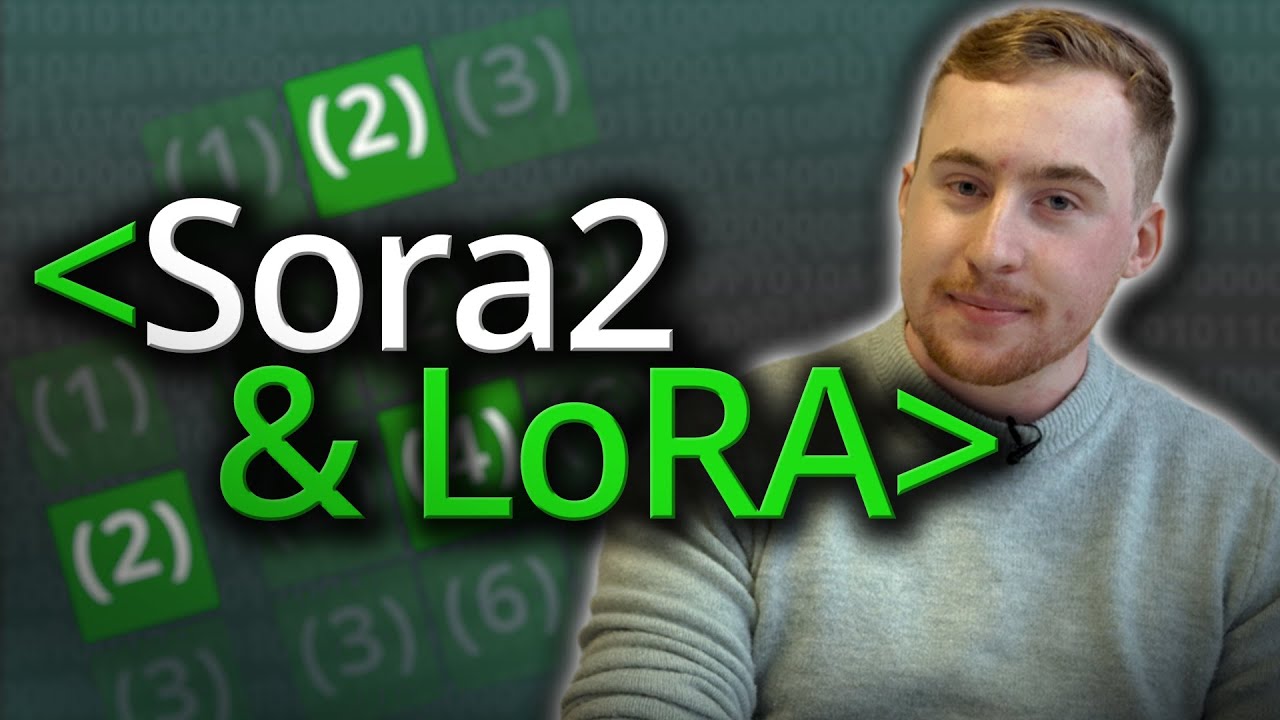The video explains how Sora 2 uses low-rank adaptation (LoRA) to efficiently clone a person by retraining only small, low-rank matrices within a large AI model, enabling photorealistic video generation from limited data. This approach allows for fast, resource-light personalization without retraining the entire neural network, balancing flexibility and efficiency to produce high-quality, customized AI-generated content.
The video discusses the capabilities of Sora 2, a new AI video generation model that can clone a person by creating photorealistic videos of them speaking. The presenter explains that while diffusion models can generate images of famous people because they are part of the training set, they struggle to create new content of ordinary individuals who are not included in the training data. To overcome this, the neural network must be retrained to learn the unique features of a new person, such as Michael Pound, by adjusting the model’s weights accordingly.
Retraining an entire neural network is computationally expensive and impractical due to the massive size of these models. Instead, the video introduces the concept of low-rank adaptation (LoRA), which allows for efficient retraining by representing large weight matrices as the product of two smaller low-rank matrices. This approach significantly reduces the number of parameters that need to be adjusted, making the retraining process faster and less resource-intensive. By freezing the original weights and only updating these smaller matrices, the model can learn new concepts without losing its ability to generate general content.
The presenter provides a detailed explanation of how matrix multiplication works in this context, showing how a large matrix can be decomposed into two smaller matrices with a low rank. Increasing the rank of these matrices allows for greater flexibility in representing changes, enabling the model to better capture the unique features of a person. However, there is a trade-off between the rank size and efficiency, as making the rank too large can negate the benefits of this approach by increasing computational complexity.
Using LoRA, only a small amount of input data—around 20 images with captions—is needed to train the model to generate new content of a person. The model can then scale the influence of these low-rank matrices to control how strongly the new concept is injected into the generated images or videos. While combining multiple LoRA modules is possible to create interactions between different concepts or people, this can sometimes lead to a loss in quality due to overlapping changes in the weights.
Overall, the video highlights the advantages of low-rank adaptation for AI video generation, emphasizing its efficiency, speed, and flexibility. This technique enables personalized content creation without the need for retraining massive neural networks from scratch. The presenter concludes that this approach proves that small, targeted changes to a neural network’s weights can produce significant and high-quality results, making it a powerful tool for AI-driven media generation.
